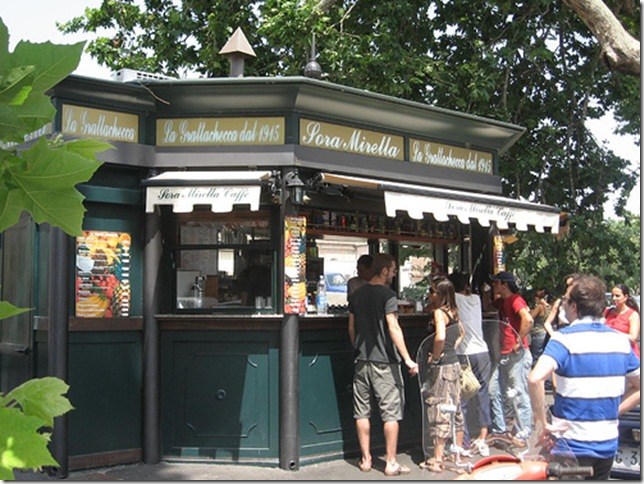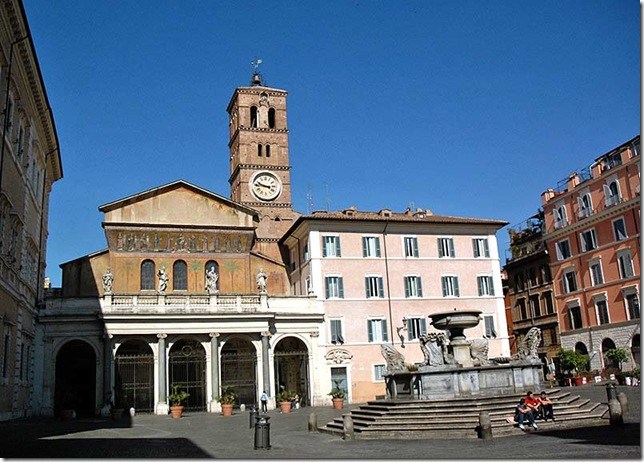Here is a shortened version of Rick Steves’ Jewish Ghetto Walk located here.
The Jewish Ghetto is at the east bank of the Tiber, near the Isola Tiberina and the Theater of Marcellus. The day to avoid this walk is on Saturday when the synagogue and museum are closed. This ghetto is the home to 15,000 Roman Jews forced to live here more than 300 years ago.
Download the Map from Rick Steve’s Page
Download the Audio Tour from Rick Steve’s Page
Ponte Fabricio
Start at the north end of the Ponte Fabricio.
What to see: Ponte Quattro Capi (“Bridge of the Four Headsâ€) – Statues of the four-faced pagan god Janus.
What to see: The embankment was buit in the late 19th century. Before then, this was the most flooded zone along the Roman riverbank.
With your back to the river, at your left is the…
Synagogue (Sinagoga) and Jewish Museum (Museo Ebraico)
What to see: The Synagogue – This was the original center of the Jewish community. The churchlike synagogue has a square dome, and is Art Nouveau with a dash of Tiffany.
What to see: The Jewish Museum shows off historically artifacts described in English.
Look for the yellow church across from the Ponte Fabricio…
Santa Maria della Pieta (a.k.a. San Gregorio)
What to see: The Santa Maria della Pieta – This is a Catholic church built to spread their faith to the Jews.
Walk towards the ancient Roman ruins, where there is a small square in front of the ruins called…
Largo 16 Ottobre 1943
This square is named for the date when the Nazis parked their trucks and threatened to take the Jews to concentration camps unless they came up with 50 kilos of gold. In the end, they took the gold and the Jews.
Head to the ancient ruins…
Portico d’Ottavia
What to see: The Portico d’Ottavia is an archway built by the emperor Augustus. This was once the cultural center in the Roman empire, until the fall of Rome. The portico became a thriving fish market, and eventually into the Church of Sant’Angelo in Pescheria.
Now head to the main drag of the Jewish Ghetto…
Via del Portico d’Ottavia
What to eat: Sora Margherita Associazione Culturale – There is no sign but they have traditional Jewish fare.


